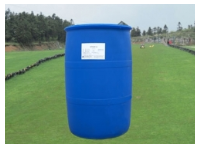According to the theory of dyeing and the physicochemical principle of surfactant, the application of surfactant as dyeing assistant in dyeing can be discussed in the following three aspects.

① The participation of surfactants can reduce the surface tension of dye solution and greatly reduce the wetting surface of the fiber surface, which will promote the fiber wetting and internal penetration when the dye dissolves, accelerate the dyeing process and shorten the dyeing time. When silk fabric is dyed, the addition of O, JFC, archaic oil and pancreatico bleaching t plays a role in this process.
② When dyeing with insoluble or insoluble disperse dyes and azo dyes, the addition of surfactants makes the dyes disperse and solubilize fully, which plays an important role in the smooth completion of dyeing. When the silk fabrics are dyed with neutral dyes and acid dyes, the dyes are not easy to disperse sufficiently at low temperature to form coalescence, and at this time, they need to rely on the surfactant with strong dispersion.
In synthetic detergents, the detergent usually softens the hardness of water and improves the pH of the washing liquid. The amount of the detergent is generally large; the amount of additives is small, which is commonly called "small material". Most of the detergent is used in washing powder, and the amount of detergent is limited unless it is structural liquid washing. STPP (sodium tripolyphosphate) is an incomparable detergent with comprehensive performance as a soft water agent. However, STPP is a phosphorus containing additive, which will aggravate the eutrophication of closed water to a certain extent, so it can not be used as a green detergent.
Polycarboxylate can effectively improve the anti deposition and ash resistance of washing powder. The contribution of polycarboxylate to decontamination is better than CMC, whether it is phosphorus containing or non-phosphorus. However, the pollution of polycarboxylate to soil is not negligible because it is not easy to biodegradate. NTA and EDTA have excellent soft water ability, but NTA has potential carcinogenicity, but EDTA has poor biodegradability. Therefore, polycarboxylate, NTA and EDTA should be avoided in green detergents.